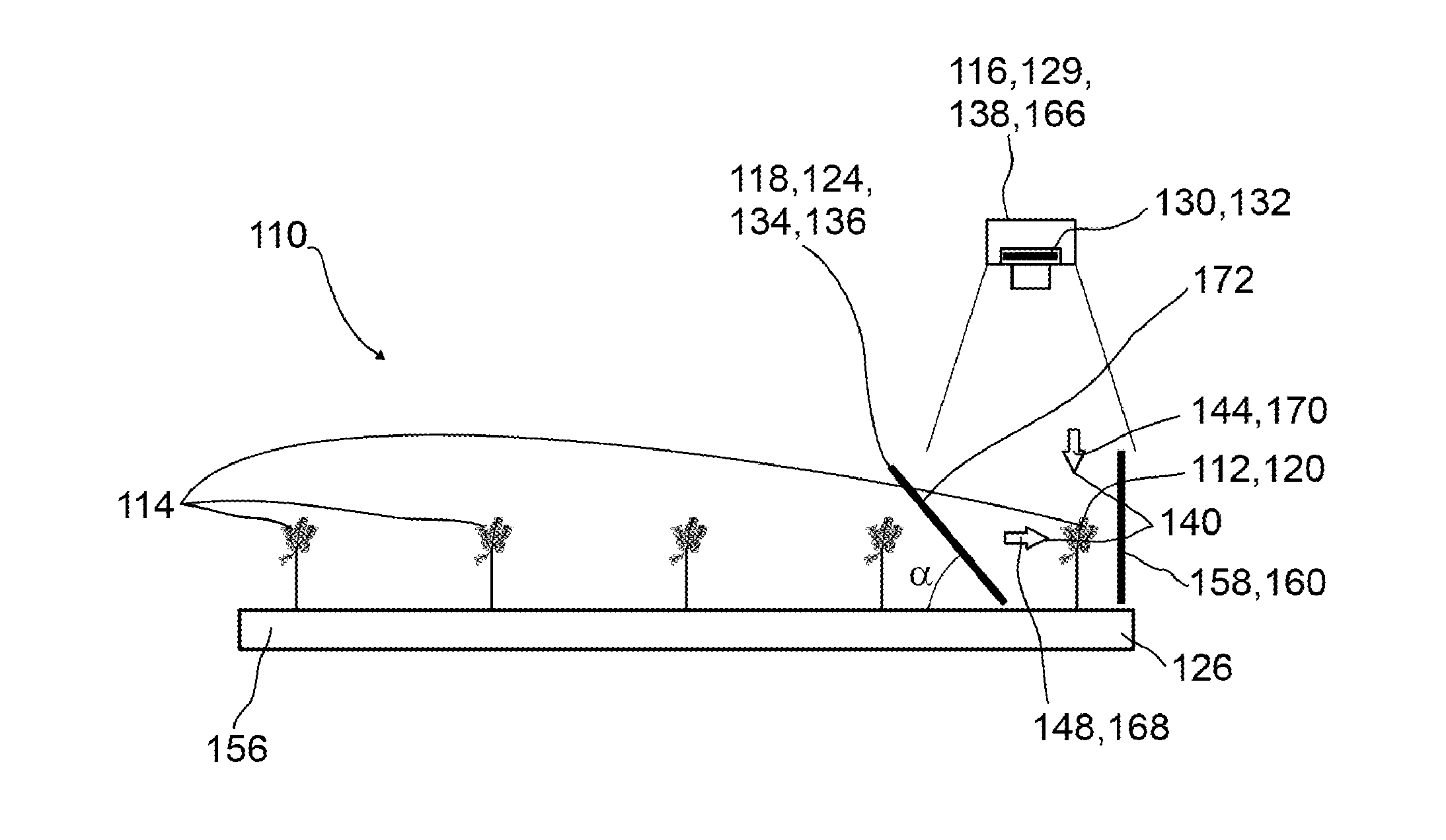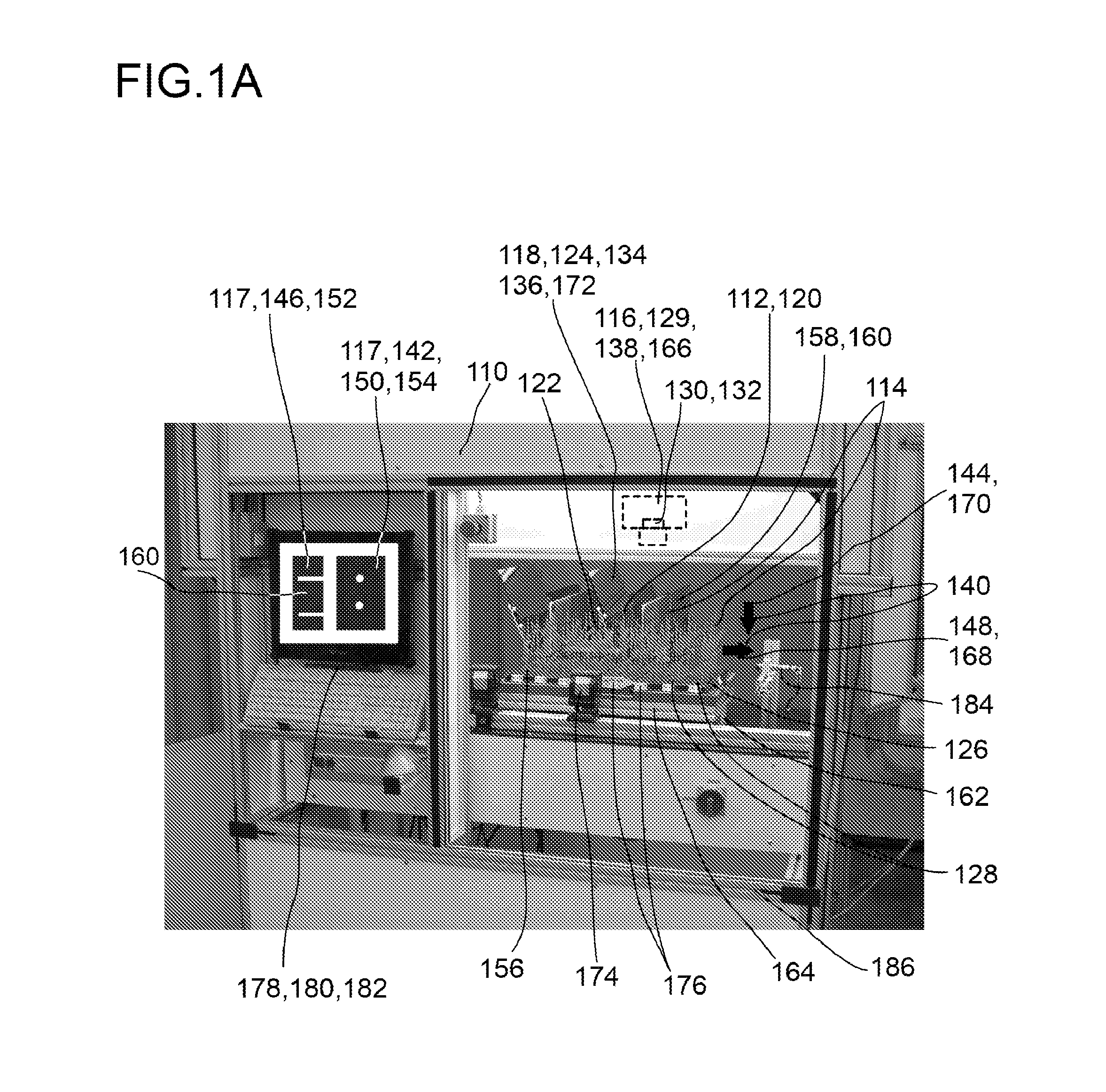Screening device for screening plant specimens
a screening device and plant technology, applied in combinational chemistry, seed and root treatment, chemical libraries, etc., can solve the problems of not really making sense to take pictures from above, and not being useful for this kind of plant specimens
- Summary
- Abstract
- Description
- Claims
- Application Information
AI Technical Summary
Benefits of technology
Problems solved by technology
Method used
Image
Examples
Embodiment Construction
[0142]In FIGS. 1A and 1B an example of a screening device 110 for screening at least one plant specimen 112 in a plurality of plant specimens 114 is depicted. The screening device 110 comprises at least one detector 116 adapted for acquiring spatially resolved images 117. The screening device 110 further comprises at least one selection device 118 adapted for selecting a single plant specimen 120 or a group of plant specimens 122 from the plurality of plant specimens 114 for imaging by the detector 116. The selection device 118 comprises at least one deflection device 124 adapted for deflecting electromagnetic waves propagating between the plant specimens 112 and the detector 116.
[0143]The screening device 110 further may comprise at least one plant container 126 containing a plurality of plant specimens 114, preferably the plant specimens 112 growing in rows 128, or a plurality of plant containers 126 containing at least one plant specimen 112. FIG. 1A shows a screening device 110 ...
PUM
| Property | Measurement | Unit |
|---|---|---|
| angle | aaaaa | aaaaa |
| angle | aaaaa | aaaaa |
| angle | aaaaa | aaaaa |
Abstract
Description
Claims
Application Information
 Login to View More
Login to View More - R&D
- Intellectual Property
- Life Sciences
- Materials
- Tech Scout
- Unparalleled Data Quality
- Higher Quality Content
- 60% Fewer Hallucinations
Browse by: Latest US Patents, China's latest patents, Technical Efficacy Thesaurus, Application Domain, Technology Topic, Popular Technical Reports.
© 2025 PatSnap. All rights reserved.Legal|Privacy policy|Modern Slavery Act Transparency Statement|Sitemap|About US| Contact US: help@patsnap.com



